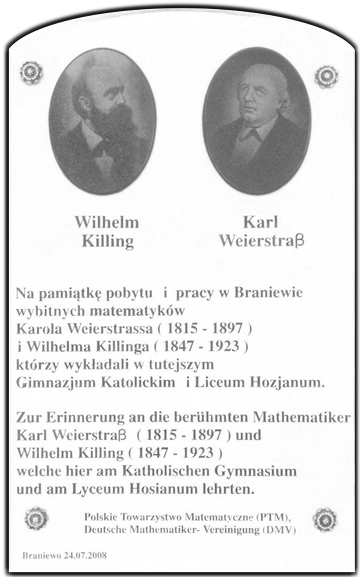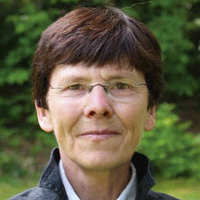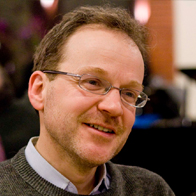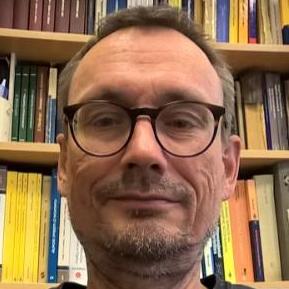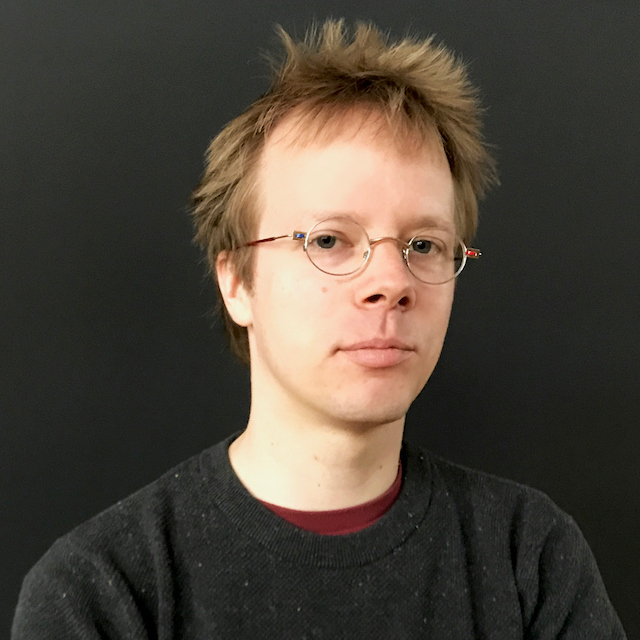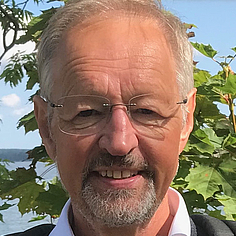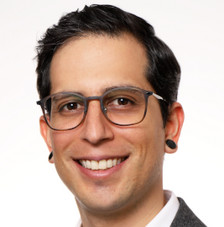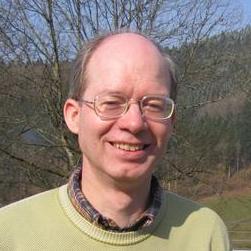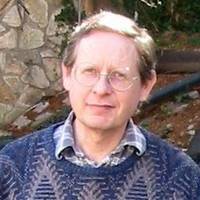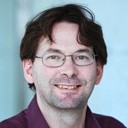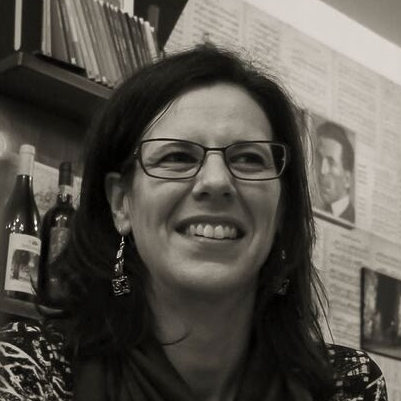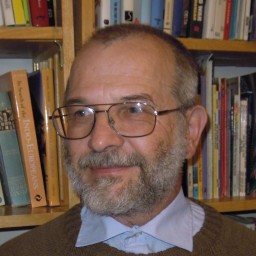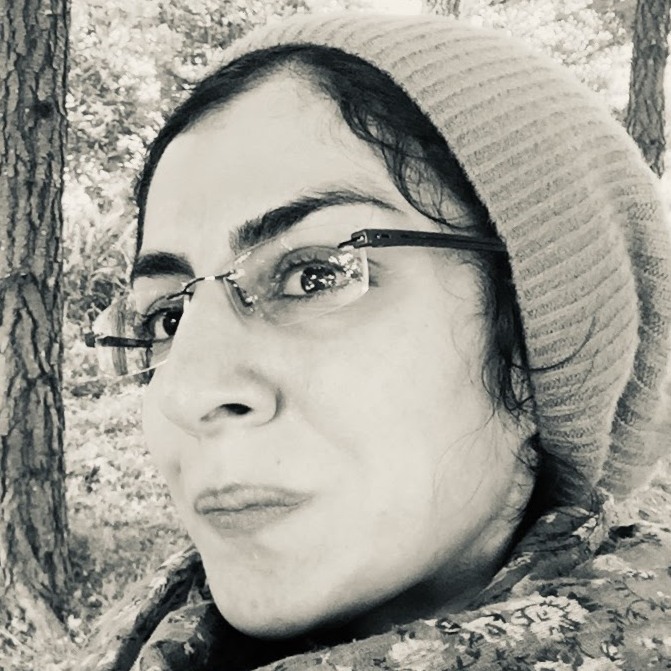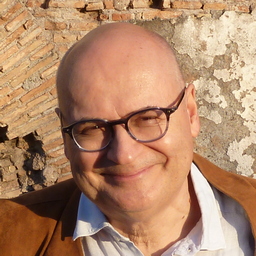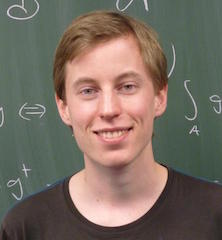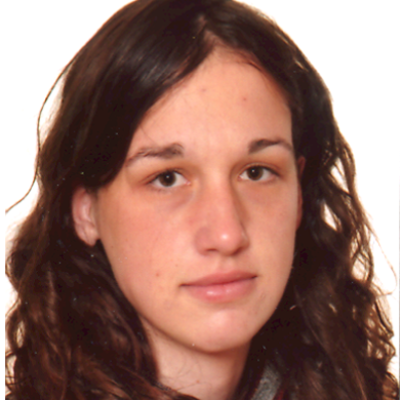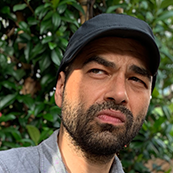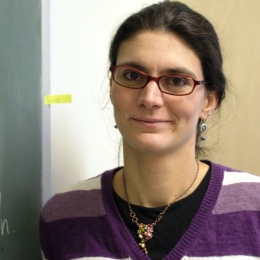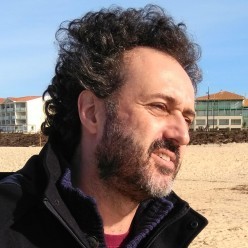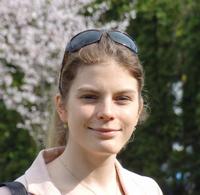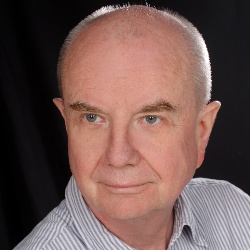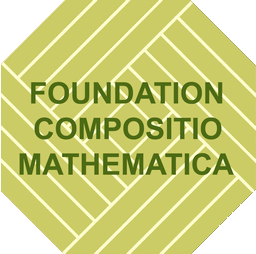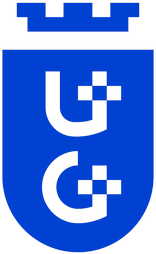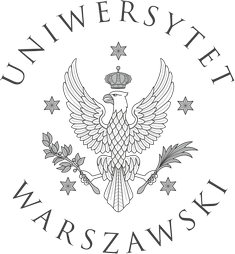09:30-10:30
Algebraic foliations and derived geometry
By Bertrand Toën (joint work with G. Vezzosi)
Foliations defined on algebraic varieties
are rarely without singularities. These singularities can be studied using
derived techniques via a notion of "derived foliations", in the same way than
singularities of algebraic varieties can be studied using the notion of derived
schemes. In this talk, I will explain the notion of derived foliations and
report on recent applications for the study of singular foliations. These
include results in the complex case, as well as foliations defined over
base fields of arbitrary characteristics.
10:30-11:00
Coffee break
11:00-12:00
HMS symmetries of toric boundary divisors
By Špela Špenko (joint work with Michel Van den Bergh)
Let \(X\) be a complex manifold. By homological mirror symmetry one expects an action
of the fundamental group of the "moduli space of Kähler structures" of \(X\) on the derived
category of \(X\). If \(X\) is a crepant resolution of a Gorenstein affine toric variety
we obtain an action on the derived category of the toric boundary divisor of \(X\) which
leads to an action on the Grothendieck group of \(X\).
14:30-15:30
Grothendieck classes of quadric hypersurfaces and involution varieties
By Gonçalo Tabuada
The Grothendieck ring of varieties, introduced in a letter
from Alexander Grothendieck to Jean-Pierre Serre (August 16th 1964),
plays an important role in algebraic geometry. However, despite the
efforts of several mathematicians, the structure of this ring still
remains poorly understood. In this talk, in order to better understand
the Grothendieck ring of varieties, I will describe some new structural
properties of the Grothendieck classes of quadric hypersurfaces and
involution varieties.
15:30-16:00
Coffee break
Short communication's session
16:00-16:20
Haupt-Kapovich theorem revisited
By Rodion Deev, IMPAN
A theorem by O. Haupt (1920) and M. Kapovich (2000)
describes the set of cohomology classes on a genus \(g\) topological
surface which can be realized by holomorphic \(1\)-forms on some genus
\(g\) complex curve. Unlike in the Schottky problem, the answer is
a simple linear-algebraic condition. F. Bogomolov discovered that
this Haupt--Kapovich phenomenon generalizes likely to the case
when we try to squeeze a given two- or three-dimensional subspace
\(\tau \subset H^1\) into \(H^{1,0}\) for some complex structure.
This matter is far from being clear, but the present results are
enough to prove some interesting theorems, and to look for interesting
generalizations of the problem e. g. for determining possible fibers
of Lagrangian fibrations.
16:30-16:50
Introducing LG-models for \(qH^*(G/P)\) through examples
By Peter Spacek, TU Chemnitz (joint work with Charles Wang)
Using accessible examples, we introduce recent work concerning mirror symmetry
for homogeneous spaces \(G/P\). We will introduce the small quantum cohomology
(\(qH^*\)), Plücker coordinates, Landau-Ginzburg (LG-) models, and time-permitting
cluster structures. Finally, we will spotlight the mirror models we have constructed
for the Cayley plane and the Freudenthal variety (homogeneous over groups of type \(E\)).
17:00-17:20
Spin-structures on real Bott manifolds with Kaehler structure
By Anna Gąsior, Maria Curie-Skłodowska University in Lublin (joint work with Rafał Lutowski)
Real Bott manifolds occur as total spaces of specific sequences of \(\mathbb{R}P^1\)-bundles. Every such a manifold \(M\) is a quotient
of a flat torus by a free and faithful action of an elementary abelian 2-group.
Up to diffeomorphism, \(M\) is determined by a certain square matrix \(A\) with coefficients in \(\mathbb{F}_2\).
We call \(A\) a Bott matrix and we denote the manifold \(M\) by \(M(A)\). In 2011 Ishida gave necessary and sufficient
conditions for existence of a Kaehler structure on \(M(A)\), which involve properties of \(A\) only.
In this talk we examine the existence of spin structures on real Bott manifolds with Kaehler structure.
We show that, similarly as in Ishida's condition, this existence can be formulated in purely combinatorial
form - in terms of some properties of Bott matrices.
17:30-17:50
Affine cones over Grassmanians and their stringy \(E\)-functions
By Timothy De Deyn, Vrije Universiteit Brussel
Through the example of affine cones over Grassmanians we will discuss evidence indicating
a connection between the existence of non-commutative crepant resolutions of a variety and
properties of certain string-theoretic invariants associated to that variety. As a concrete
incarnation hereof we will explain that non-commutative crepant resolutions, if they exist,
seem to enforce the stringy \(E\)-function to be a polynomial.
18:00-18:20
Twisted Hodge diamonds give rise to non-Fourier-Mukai functors
By Felix Kueng, Universite Libre de Bruxelles
We use computations of twisted Hodge Diamonds in order to compute the
Hochschild cohomology of smooth degree d Hypersurfaces. Using these
computations we can deduce the dimension of the kernel in Hochschild
cohomology of the push forward along closed embeddings into projective
space. In particular this allows the construction of new
non-Fourier-Mukai functors between well behaved target and source spaces.
09:30-10:30
The Triangulated Auslander-Iyama Correspondence
By Gustavo Jasso (joint work with Fernando Muro)
Previous work of Muro establishes the existence and uniqueness of (DG)
enhancements for triangulated categories which admit an
additive generator whose endomorphism algebra is finite-dimensional
(over a perfect field). In this talk I will present a
generalisation of this result that allows us to treat a larger class of
triangulated categories, which instead admit a generator with a strong
regularity property (a so-called dZ-cluster tilting
object). I will explain our main result as well as some interesting
applications.
10:30-11:00
Coffee break
11:00-12:00
An introduction to the Donovan-Wemyss conjecture
By Bernhard Keller
Compound Du Val (=cDV) singularities were introduced by
Miles Reid in the early eighties as 3-dimensional analogues of
simple surface singularities. They play an important role in
the minimal model program. In 2013, Donovan and Wemyss introduced
the contraction algebra associated with a crepant resolution
of a cDV singularity. They showed that it is a finite-dimensional
(non commutative) algebra and determines many important invariants
of the singularity. They conjectured that it determines the
singularity itself up to isomorphism. More and more evidence for the
conjecture was accumulated in work by Donovan-Wemyss, Wemyss, Toda,
Hua-Toda, Hua, August, Hua-K and others. I will give a historical
introduction to the conjecture and conclude by explaining how it
follows by combining the work of August and Hua-K with the triangulated
Auslander-Iyama correspondence, a recent theorem due to Gustavo Jasso
and Fernando Muro (cf. Gustavo Jasso's talk at this Colloquium).
14:30-15:30
The geometry of Weyl orbits on blow-ups of projective spaces
By Eliza Postinghel (joint work with C. Brambilla, O. Dumitrescu and L. Santana Sánchez)
Linear systems of divisors on blow-ups of projective spaces in points in general positions are
connected to certain polynomial interpolation problems. While for the case of plane curves and
of surfaces in 3-space there are conjectures, although long standing, formulated by M. Nagata,
B. Segre and others, in the higher dimensional case we are in the dark. However, when the number
of points is not too large and the blow-ups are Mori dream spaces, an action of the Weyl group on
cycles of any codimension governs the birational behaviour of the space on the one hand, and the
stable base locus of divisors on the other hand, and it yields a solution to the interpolation problem.
15:30-16:00
Coffee break
16:00-17:00
Wall-crossing and its applications in moduli theory
By Fatemeh Rezaee
We will start by introducing the notion of wall-crossing with respect to
Bridgeland stability conditions in dimension three. Then we will apply
this machinery to the moduli problems in algebraic geometry, such as
the moduli space of stable pairs for specific space curves. Time permitting,
we will explain how incorporating derived algebraic geometry into
the picture can extend it to handle the general case.
Short communication's session
17:20-17:40
Identifiability of pairs of ternary forms
BY Francesco Galuppi, IMPAN
Two general quadratic forms can be simultaneously diagonalized in a unique way. For forms of higher degrees, it is
a long-standing problem to classify when we get uniqueness. In this talk I'll present the solution for forms in
three variables. Our strategy is to translate the problem into the study of a certain linear system on a projective
bundle on the plane.
17:50-18:10
Projective manifolds admitting Ulrich tangent bundle
By Yulieth Prieto, University of Bologna (joint work with V. Benedetti. P. Montero, and S. Troncoso)
One of the significant issues of the subject is whether or not smooth projective varieties admit Ulrich bundles.
Inspired by the results of Casnati in the case of surfaces, we give numerical restrictions on the Chern classes of
Ulrich bundles to the case of threefolds, and we observe a practical restriction concerning the first Chern class for
any higher--dimensional projective manifold. Applying these facts, we show that the only projective manifolds whose
tangent bundle is Ulrich are the twisted cubic and the Veronese surface.
09:00-10:00
On tensor envelopes of regular categories
By Friedrich Knop
A classical construction assigns to every regular category the
tensor category of relations. Twisting this construction with a degree
function one arrives at the tensor enveloping categories which are under
certain conditions semisimple abelian. In the talk we determine the
simple objects, calculate their categorical dimension and their tensor
product multiplicities.
10:15
Excursion to Braniewo
About 12:30
How did Teaching in Braniewo affect Weierstrass’ and Killing’s Research?
By Norbert Schappacher
Both Weierstrass and Killing spent several years teaching in Braniewo before they obtained their
positions as University professors in Berlin, resp. in Münster. The talk will reflect on the
educational system that made such careers possible, and explore how these two world famous
mathematicians combined their teaching duties with their mathematical research. The picture
that emerges will show similarities, but also interesting differences between Weierstrass and Killing.
09:30-10:30
Moduli of elliptic K3 surfaces and the Weierstrass normal form: monodromy versus Shimada strata
By Klaus Hulek (joint work with Michael Lönne)
The Weiertrass normal form can be used to construct a moduli space of non-isotrivial elliptic K3.
Alternately, one can use Hodge structures. This moduli space admits several stratifications. Here
we consider two of them. The first is the monodromy stratification introduced by Bogomolov, Petrov
and Tschinkel and the second is the Shimada stratification obtained by fixing the root lattice of
the trivial Neron–Severi group. Neither of these stratifications is a refinement of the other.
There are, however, a number of strata which are common to both stratifications. Here we classify
these so called ambi-typical strata, of which there are 50.
10:30-11:00
Coffee break
11:00-12:00
Deformations of K3 twistor families
By Martin Schwald (joint work with Daniel Greb)
We aim for establishing a moduli theory for families of K3 surfaces over \(CP^1\),
most importantly, twistor families. While the moduli space of K3 surfaces is non-Hausdorff,
the deformations of twistor families are classified by a smooth connected component
in a cycle space. Furthermore, K3 surfaces over the same cycle share a geometric
property. This is a joint work with Daniel Greb, building on previous work
with Ana-Maria Franzen-Brecan and Tim Kirschner.
14:30-15:30
Quantitative sheaf theory and arithmetic Fourier transforms over finite fields
By Emmanuel Kowalski (joint work with A. Forey, J. Fresán and W. Sawin)
The applications of Deligne's Riemann Hypothesis over finite fields to
analytic number theory have long been restricted by the problem of
estimating ell-adic Betti numbers independently of the characteristic.
W. Sawin has recently developed a form of quantitative sheaf theory
which solves this problem almost entirely. The talk will explain the
basic background and ideas, and present applications to Fourier
transforms and equidistribution problems for exponential sums
parameterized by characters of commutative algebraic groups,
generalizing results of Deligne and Katz.
15:30-16:00
Coffee break
Short communication's session
16:00-16:20
Harish-Chandra bimodules in complex rank
By Aleksandra Utiralova, UC Berkeley
The Deligne tensor categories are defined as an interpolation of
the categories of representations of groups \(GL_n, O_n, Sp_{2n}\) or \(S_n\)
to the complex values of the parameter \(n\). One can extend many
classical representation-theoretic notions and constructions to this
context. These complex rank analogs of classical objects provide
insights into their stable behavior patterns as n goes to infinity.
I will talk about some of my results on Harish-Chandra bimodules in the
Deligne categories. It is known that in the classical case simple
Harish-Chandra bimodules admit a classification in terms of W-orbits
of certain pairs of weights. However, the notion of weight is not
well-defined in the setting of the Deligne categories. I will explain how
in complex rank the above-mentioned classification translates to a
condition on the corresponding (left and right) central characters.
16:30-16:50
Arithmetic Moduli of Weierstraß Fibrations
By Jun Yong Park, MPIM Bonn
We will first consider the formulation of the moduli of fibered algebraic surfaces
as the Hom space of algebraic curves on moduli stacks of curves. Focusing upon the
Weierstraß equations and their moduli counterparts the weighted projective stacks,
we will explore some interesting consequences of a discrepancy between the
Integral/Rational points on moduli stacks of elliptic curves over function fields
and also correspondence of Rational maps with valuations to Twisted maps with stabilizers.
17:00-17:20
Hodge-to-de Rham degeneration for Artin stacks
By Dmitry Kubrak, MPIM Bonn
I will talk about my joint work with A.Prikhodko where we prove degeneration of the
Hodge-to-de Rham spectral sequence for certain class of smooth Artin stacks via a
suitable refinement of the Deligne-Illusie method. This class of stacks (which we call
Hodge-properly spreadable) includes all smooth proper stacks, but in fact is much more
general: in particular, for the quotient stack of a scheme by an action of a reductive
group it is just enough for the course moduli to be proper.
17:30-17:50
Formality and strongly unique enhancements
By Antonio Lorenzin, University of Pavia and University of Milano-Bicocca
Inspired by the intrinsic formality of graded algebras, we give a characterization of
strongly unique DG-enhancements for a large class of algebraic triangulated categories,
linear over a commutative ring. We will discuss applications to bounded derived categories
and bounded homotopy categories of complexes. For the sake of an example, the bounded
derived category of finitely generated abelian groups has a strongly unique enhancement.
18:00-18:20
Donaldson-Thomas theory of \(C^3\) via matrix factorizations
By Tudor Padurariu, Columbia University (joint work with Yukinobu Toda)
Donaldson-Thomas theory associates integers (which are virtual counts of sheaves)
to a Calabi-Yau threefold \(X\). For the simplest example of \(C^3\), the
Donaldson-Thomas (DT) invariant of sheaves of zero dimensional support and length \(d\)
is \(p(d)\), the number of plane partitions of \(d\). The DT invariants can be recovered
as the Euler characteristic of a collection of vector spaces. It is natural to ask whether
for a given Calabi-Yau threefold \(X\), there exists a categorification of these vector
spaces (and thus of DT invariants), for example a category whose periodic cyclic homology
recovers (a \(\mathbb{Z}/2\)-periodic version of) these vector spaces, and thus recovers
the DT invariants of \(X\). There exist such categorifications, constructed using matrix
factorizations, when \(X\) is the total space of the canonical bundle over a surface \(S\).
I will focus on the categorification \(\mathcal C\) of DT invariants for \(C^3\), in particular we
will construct semi-orthogonal decompositions of \(\mathcal C\) and study the \(K\)-theory of \(\mathcal C\),
and explain how these computations relate to \(p(d)\). The semi-orthogonal decompositions
of \(\mathcal C\) have applications in categorical DT/Pandharipande-Thomas wall-crossing.
09:00-10:00
Topology of non-archimedean manifolds
By Piotr Achinger
Rigid geometry is the analog of complex analytic geometry over
non-archimedean fields such as the \(p\)-adic numbers \(\mathbb Q_p\) or complex
formal Laurent series \(C((t))\). I will review some recent results
concerning the "homotopy types" of rigid analytic spaces, mostly
dealing with different aspects of the fundamental group.
10:15-11:15
Characterization of quasi-abelian surfaces
By Sofia Tirabassi (joint work with R. Pardini and M. Mendes Lopes)
We give an effective charactrization of quasi-abelian surfaces,
analogue to the characterizations of abelian surfaces of Enriques and Chen-Hacon.
11:15-11:45
Coffee break
11:45-12:45
Khovanov homology and its complexity
By Józef Przytycki (joint work with Marithania Silvero)
We discuss our conjecture that Khovanov homology for links with fixed braid index
can be computed in polynomial time (in general computing Khovanov homology is NP hard).
The gentle introduction to Khovanov homology will be offered.
